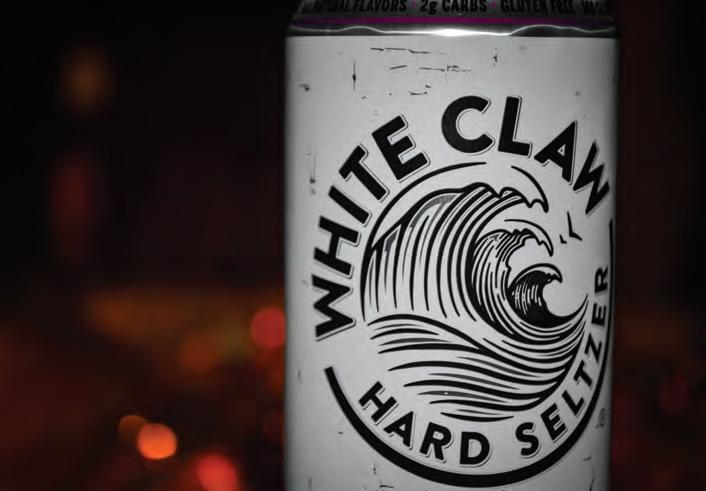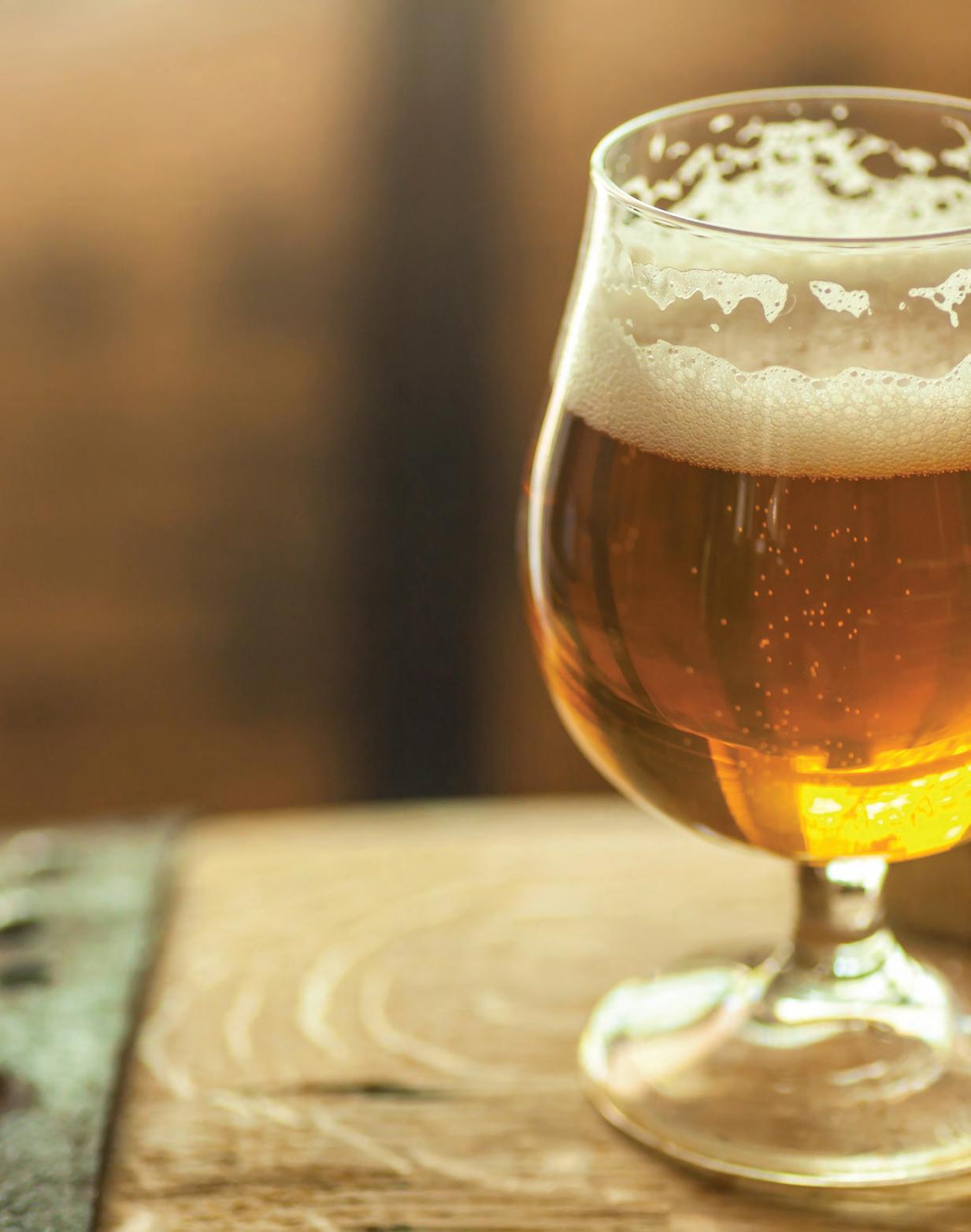
4 minute read
White Claw launches in Australia
Lion gets its claws into the alcoholic seltzer market
ALCOHOLIC SELTZER PHENOMENON WHITE CLAW WILL HIT THE SHELVES IN AUSTRALIA IN OCTOBER, WITH LION ACQUIRING THE RIGHTS TO IMPORT, MARKET AND DISTRIBUTE THE BEVERAGE IN AUSTRALIA.
Advertisement
The brand leads its category in the United States, with sales growing by 315% in the year-to-date and in excess of 80 million cases sold.
Initially Lion will import and distribute three leading variants – Mango, Natural Lime and Ruby Grapefruit, with more to come.
James Brindley, Managing Director of Lion Australia, is bullish about the brand’s prospects: “The popularity of White Claw cannot be disputed. Despite the fact the product has not actually been available in Australia up until now, it has well and truly earned its place in popular culture and is the market leader globally in this exciting new category. It is the most sought-after beverage brand in the world right now.
“It is a natural fit for our growing portfolio of adult beverages beyond our core beer range – and taps into a number of consumer trends around lower calorie and lower sugar products. We believe the seltzer category represents a significant growth opportunity for Lion over the coming years and we are looking forward to bringing the biggest seltzer brand in the world to Australia.”
THE CULT OF WHITE CLAW
Launched in 2016, the name White Claw takes its inspiration from the legend of the white claw wave — when three perfect crests come together to create a moment of pure refreshment.
In the US, the brand has close to 60% market share of the seltzer category, almost three times the size of its nearest competitor, and in the process has become something of a cultural behemoth, with passionate consumers in their millions championing White Claw online.
It’s also made owner Anthony von Mandl a billionaire, with a net worth of about $3.4 billion according to the Bloomberg Billionaires Index.
Von Mandl sees White Claw as the beverage of the future. He told a beer wholesalers convention last year that “the consumers flocking to White Claw today are not going to magically return to the megabeer brands of yesterday.”
Struggling to keep up with domestic demand, his company just invested $250 million in new production facilities as it looks to international expansion.
Research firm IWSR Drinks Market Analysis says Von Mandl is on the money. While it predicts double-digit declines in 2020 for total global alcohol consumption, alcoholic seltzer will buck the trend by continuing to grow during COVID-19.
Those findings dovetail with the latest data from Nielsen, which shows the number of consumers buying alcoholic seltzer in the off-premise between March 1 and April 25, 2020, nearly doubled. And 44% of buyers were doing so for the first time.
In the week ending May 23, alcoholic seltzer increasing off-premise dollar sales 272% in the US and reached 10.1% dollar share of the beer category.
Davin Nugent, CEO of Mark Anthony Brands International, said the company was
thrilled to be working with Lion and excited to take the first steps with them into the emerging seltzer category in Australia.
“Lion has an outstanding track record of nurturing international brands to success in Australia and we look forward to working with them to introduce local consumers to White Claw Hard Seltzer,” he said.
“Making the decision to come here was an easy one, as consumers familiar with the brand in America have made sure to have their voices heard on our social media channels, demanding we bring White Claw to Aussie shores.”
LION FIRST INTO THE AUSSIE SELTZER CATEGORY
Alcoholic seltzer has come a long way in a short time in Australia. Lion announced last October that it would be the first major drinks company to launch an alcoholic seltzer into the Australian market late last year, when it added Quincy to shelves.
The Australian-made, gluten-free, lower carb and lower sugar alcoholic seltzer –

containing a hint of either natural lime or passionfruit flavour – was introduced to capitalise on Australians moving towards healthier drinks options.
As Danelle Kosmal, vice president of Nielsen’s beverage alcohol practice, noted: “Alcohol drinkers are becoming more and more concerned about health and wellness, and are becoming more involved in mindful drinking. Hard seltzers are meeting these consumer needs.”
AUSTRALIAN SELTZER MARKET EXPANDS
A slew of seltzer releases by major brewers and independents have followed Quincy.
In March, Asahi Premium Beverages launched Good Tides, Australia’s first vodka-based, sugar-free alcoholic seltzer. Good Tides features sparkling water with premium, triple distilled, vodka and a hint of natural flavour. It contains no sugar or artificial sweeteners and has only 85 calories per can.
In early May, CUB released Actual, its first white spirit premix since the iconic Sub Zero hit the shelves 25 years ago. Actual Vodka Seltzer is one of the lowest-calorie ready-to-drink vodka on the Australian market and is made with 100% natural ingredients to a vegan recipe. There are two varieties, pure and lime. Pure has no sugar and 65 calories, while lime is low in sugar and contains 69 calories.
Recent independent releases include FELLR, an all natural seltzer that has only 83 calories per can and less than 1g of sugar per 330ml. FELLR is kicking off with Lime & Soda and Dry & Lime flavours, with a Watermelon variant to follow later this year.
Meanwhile, St Andrews Beach Brewery has unveiled its new Tidal Artesian Seltzer, a naturally brewed and fermented alcoholic seltzer. It’s brewed from a blend of local artesian water, cane sugar, yeast and a dash of lime or yuzu citrus. No spirits or ethanol’s are added to the brewing process and each serve contains only 85 calories, 2g of sugar and 3 carbohydrates.










